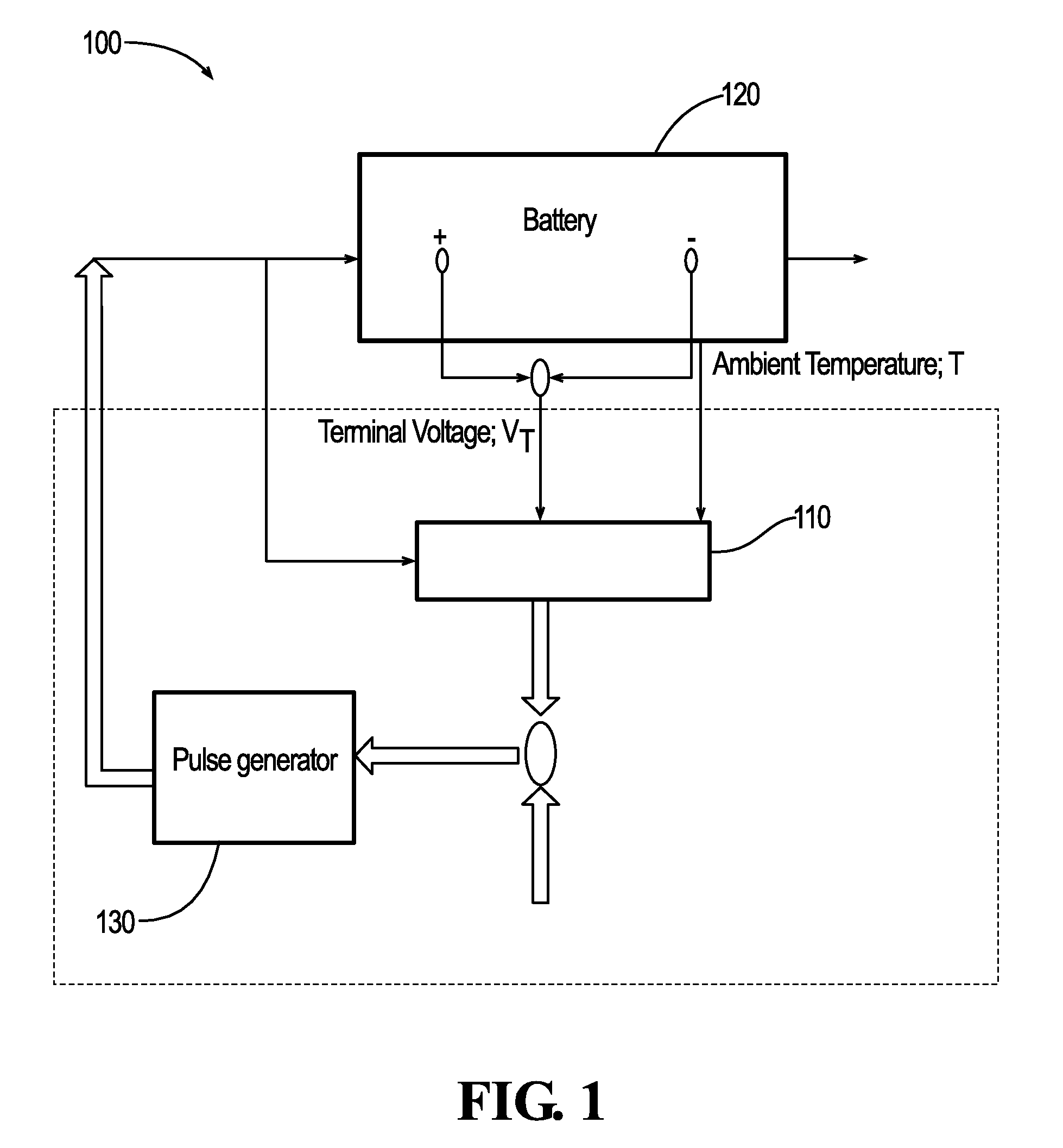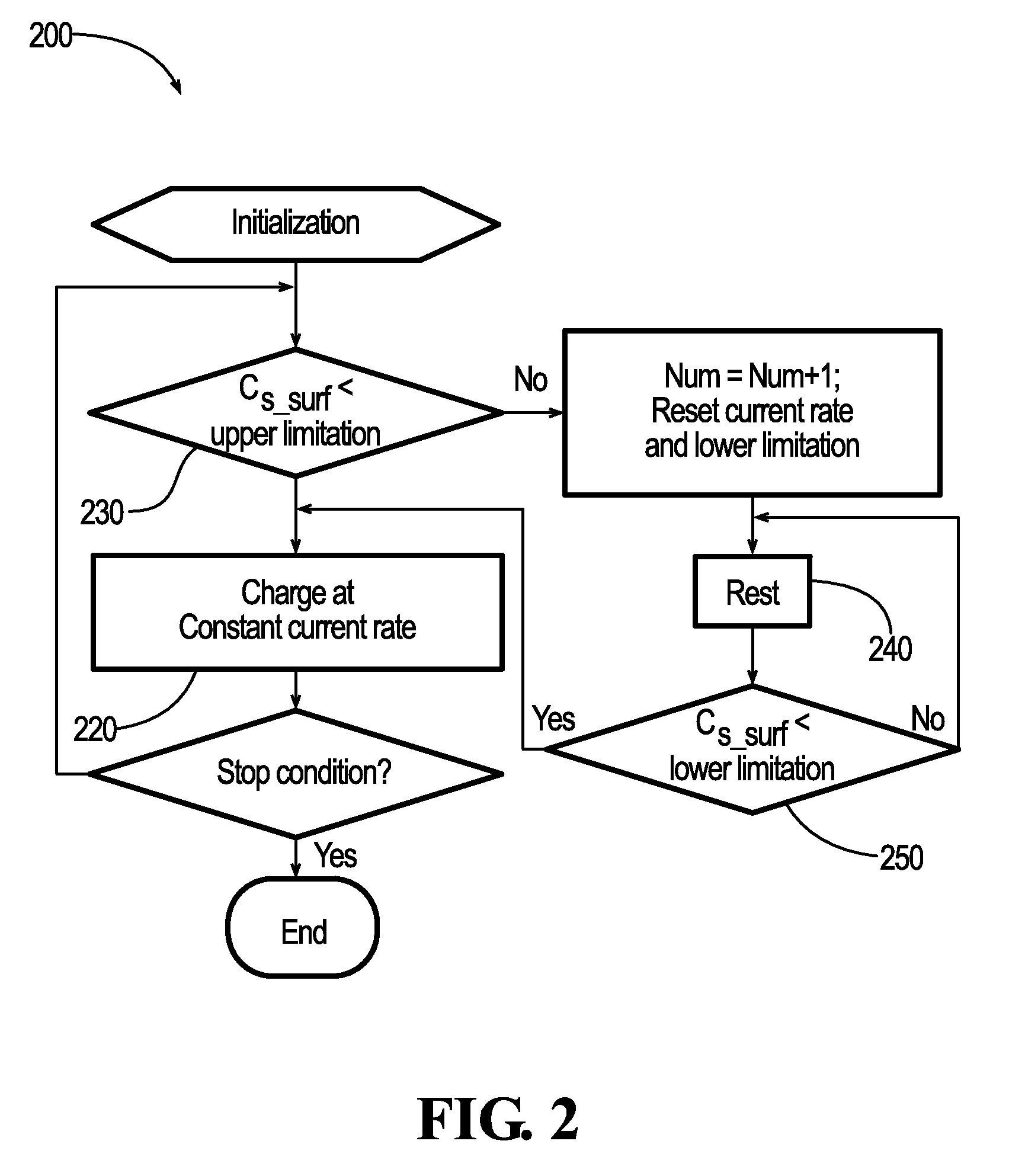Rapid battery charging method and system
a battery and charging method technology, applied in the field of rechargeable batteries, can solve the problems of lithium deposition, cell degradation caused by fast charging not being taken into account in these known prior techniques, and known methods not being completely optimized for better performance, so as to facilitate real-time calculations and minimize computational requirements
- Summary
- Abstract
- Description
- Claims
- Application Information
AI Technical Summary
Benefits of technology
Problems solved by technology
Method used
Image
Examples
Embodiment Construction
[0058]Generally described, the present invention relates to a method and system for charging a battery with a charging profile that reduces the charging time and prolongs battery life / strength. Such a method and system does so by estimating conditions within the battery during the recharging, correlating the estimation by adjusting it according to one or more actual measurements of the battery's condition, adjusting the estimation by taking the actual measurement(s) into account, and adjusting the charging profile with a feedback loop using this information. In the context of a lithium ion battery (an important application for this invention), this is done by keeping the ion concentrations within the battery from reaching undesirable levels. Thus, saturation concentrations are avoided and this prevents the battery from producing the lithium-plating and other side effects caused by an excessive ion concentration.
[0059]The excessive ion concentrations could be prevented if the surface...
PUM
| Property | Measurement | Unit |
|---|---|---|
| temperature | aaaaa | aaaaa |
| temperature | aaaaa | aaaaa |
| temperature | aaaaa | aaaaa |
Abstract
Description
Claims
Application Information
 Login to View More
Login to View More - R&D
- Intellectual Property
- Life Sciences
- Materials
- Tech Scout
- Unparalleled Data Quality
- Higher Quality Content
- 60% Fewer Hallucinations
Browse by: Latest US Patents, China's latest patents, Technical Efficacy Thesaurus, Application Domain, Technology Topic, Popular Technical Reports.
© 2025 PatSnap. All rights reserved.Legal|Privacy policy|Modern Slavery Act Transparency Statement|Sitemap|About US| Contact US: help@patsnap.com



